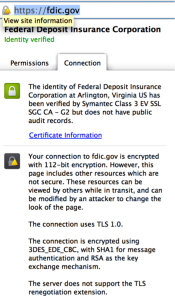Those of you who know me know that I do a fair bit of travel; in the last year and a half I flew at least 250,000 miles through Asia and Europe for work.
As part of being a regular traveler I wanted a credit card with travel benefits. After doing some research I settled on the Venture Card from Capital One primarily because of its decent interest rate and its competitive points system. With that said I still cannot recommend this as a travel card.
Why you ask? Well there is more to a travel credit card than the interest rate and points. To explain let me tell you about my trip to Russia.
First to be honest I did not explicitly tell any of my cards that I was going to Russia. That said when I know I am going to be a heavy traveler like I was in this time of my life I will notify any cards (which I did in this case) I intend to use them while traveling that I will essentially be living on the road.
Though it is a good practice to notify your card companies every time you travel internationally calling them every 3 weeks isn’t a reasonable thing to do — and in my defense until this event it was never a problem.
The first part of the trip was in Belarus where almost no one took cards and I ended up paying for everything with cash — even Internet access. The second part of this trip we went to Moscow and the first time I tried to use the Venture card it was denied.
This is the same card I had previously used throughout the rest of Europe and Asia with no problem. Assuming it was an attempt to “protect” me from card fraud I calmly called support reaching what was apparently a Philippines call center where I was instructed that my card had been flagged as stolen by someone in Russia.
I explained this was the first use of the card in Russia and the suspected fraud was me. The agent informed me that despite this fact in the name of my best interests she would be canceling my credit card.
I of course protested; I was after all in another country for another month and had planed to use the points I earned to cover some of the costs of the trip and more importantly I had left my backup travel cards in Belarus. Without this card I was in essence dependent on the limited amount of cash I had left.
I explained my situation to the agent and was told not to worry that she would have a card to me at my home within 24 hours. I explained again that I was in Russia and that sending card to the states wouldn’t be of any use.
The agent then offered to mail me the card in Russia but couldn’t guarantee when it would arrive. I explained that this could take weeks — when I ship items via the fastest choice to Russia they typically get to the country within two days but don’t get delivered for three or more weeks. The agent responded that that this was the best they could offer but after some pushing I managed to get escalated to someone in the US where I hoped I might get a better answer.
It turned out that the US office was closed at that time but a few days later I did get a call back — unfortunately though it was clear this office at least understood the situation (the agent in Philippines office was very poorly trained) I was informed that since the other agent had already canceled my card there was nothing else they could do other than send me a replacement to my home in Seattle.
This is the core of why I wouldn’t recommend Capital One for a travel card — at least to an international traveler; when your traveling your credit card is your safety net, it is how you handle currency conversions, make sure you can feed yourself, have a place to stay and can handle the surprises you may encounter. More than the points, more than the interest rate this is what a travel card is. American Express built its reputation on being that card and when I have had issues in the past they have been there to help – Capital One on the other hand left me stranded.
Anyway I was so dissatisfied with Capital One’s handling of this when I got home I paid off the balance and did not activate the new card they sent.
Fast forward to over 6 months later and I get an email saying they have charged me the renewal fee for this card that in my mind was closed. I was a little disgusted by them charging me a renewal fee for an account they in-essence took from me when I needed it most but I was going to open a card anyway and decided to activate the card they had sent previously and pay the fee.
When I activated the card the automated system told me the card was ready for use but when I tried to use the card the first time it was denied. Frustrated I set the card aside until I had enough time to mess with their support again.
When I called to resolve this I was treated like someone who was avoiding paying a long standing balance and not someone who was trying to just resolve them miss-handling an issue so I just canceled the card.
Long story short — a good travel card has to have good customer service, they have to be your partner and look out for you and Capital One just doesn’t do that.
Though in my new role I don’t do much if any international travel I do a ton of domestic and have been using the Barclay Arrival card. I have had the occasion to talk to their customer service several times, each time they were professional and helpful. While I have not had a similar situation happen while using them as my primary travel card I suspect based on these experiences they would handle things differently.


